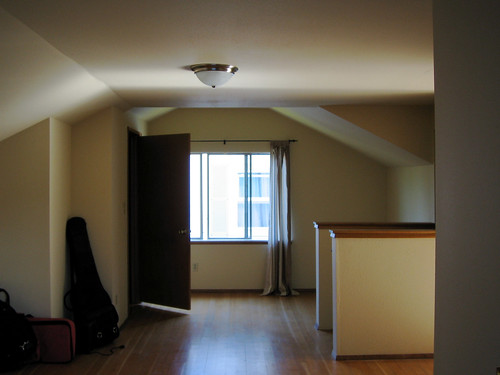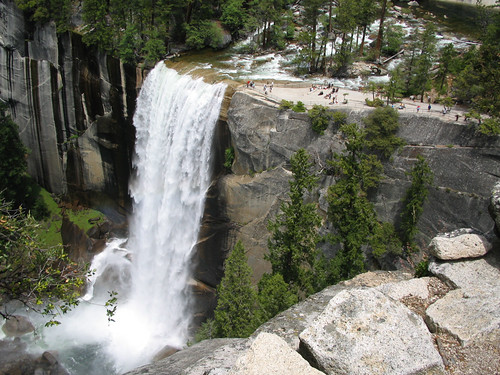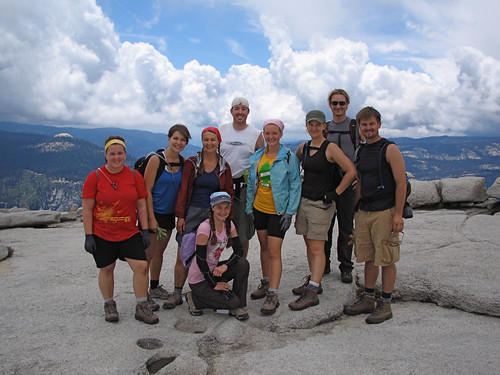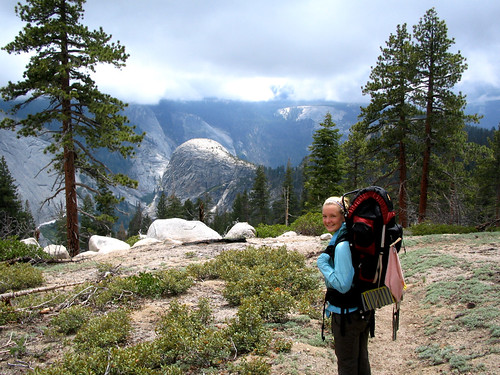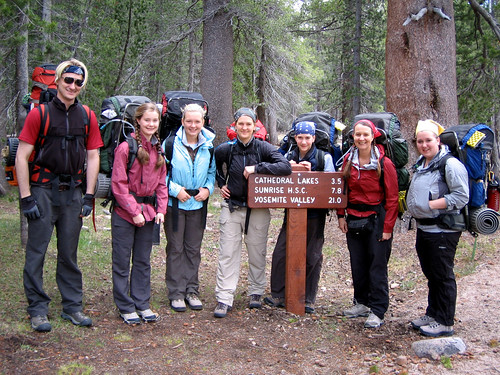I went in to work late today so I could pick up my FJ600 as soon as Felony Flyers opened. I dropped it off just before going to California, hoping it’d be finished by the time I got back, but finding a valve cover gasket for a 25-year-old bike apparently takes a while. The bike is grubby-looking as ever, underside all coated in oil and road grime, but for the first time ever it left no drips on the floor when I rode away. I’ve been topping up the oil every month or two since I got it, which is kind of embarrassing, but I’ve finally worked my way far enough down the to-do list that the leaks became the top priority.
While he was at it, Steg also tightened up the chain, synced the carbs, adjusted the valves, replaced the brake pads & fluid, and even wrapped some insulation around the exhaust joint underneath the peg, apparently just because he felt like it. Unfortunately the carburetor still isn’t set quite right; the bike is running smoother and quieter than ever, but it’s missing some power, and has a weird new tendency to hover around 2500 rpm for 20-30 seconds before dropping down to idle. Ah, well, it’s perfectly rideable, and I’ll bring it by again next week to have him readjust it.
I’m really happy to have this work done, since I’ve now reached the end of my mechanical to-do list. There will always be more maintenance work, and the bike can certainly use plenty of cleaning and cosmetic work, but aside from the carb adjustment issue it is now in perfect mechanical condition.
This bike was only supposed to be a temporary commuter while I got the Maxim fixed up, but a year of 100-200 mile weeks has made me rather fond of it. It’s not the sexy beast I was originally looking for, but it’s fast, nimble, reliable, and even graceful, in its chunky mid-80s way. It’s a big old slug by modern sportbike standards, but what they called a sportbike in ’84 actually comes off pretty well in ’09 if you think of it as a light touring bike. I might still upgrade to something like a Honda 919 or a Speed Triple next season, but for now my plan is to clean it up, make it pretty, and keep on riding.
I have a pretty clear cosmetic plan now, actually. The unique taillight lens shape is a key part of the FJ600’s look, so I want to preserve it, but I want to get rid of the side blinkers, and I am tired of dealing with incandescent bulbs. Sometime this fall I want to replace the whole taillight assembly with a custom LED board, incorporating wide-angle red LEDs for running lights, high-intensity 20-degree red LEDs for brake lights, and two strips of yellow LEDs for turn signals. I will probably even grind off the existing turn signal mounts, just to make the body line that much sleeker; the new turn signals will be hidden behind a red lens, so you’ll only see them when I’m actually using them, but the yellow color should still punch through clearly, and they should be substantially more noticeable than the current system.
I’ll need to repaint the fairing after I repair its various cracks and scrapes, but instead of duplicating the existing color scheme, I want to simplify it. I am definitely going to give the engine and exhaust a nice clean coat of flat black; but I just can’t see this bike as a rat or streetfighter. Instead of flat black I plan to strip off the 80s-fabulous decals and redo the silver & red bodywork in semi-flat grey, then give it a clearcoat. It’ll look a little cleaner, a bit more functional, but it’s really more of a happy bike than a bad-ass, so I want to keep it light. Buff up the aluminum accents, replace the windshield with some new lexan, and I think it’ll be great.

